Are you wondering exactly how the boundary wire works with a robotic mower? How can the cable ensure that the robot does not leave its working area, even when it is laid underground? I have taken a closer look at all the technology and will explain everything here in detail.
How does the boundary wire work with the robotic mower? The boundary wire runs once around the entire working area of a robotic mower, starting and ending at the charging station. This sends a weak current through the cable, which creates a magnetic field. The robotic mower can detect this weak field with special sensors. If it comes too close to the cable, its sensors will tell the robot to turn back.
In the following I will explain in more detail how this works in practice, what the boundary wire is still good for and what the technical background of this system is. A bit of physics is also involved.
Contents
How does the boundary wire work in practice?
Let’s first cover the easily digestible part, before directly diving deep into the matter. The boundary wire or perimeter wire is a thin wire, usually insulated with a PVC sheath, which is laid around the entire working area of your mowing robot.
The cable begins and ends at the charging station. This sends a weak current through the cable, which creates a magnetic field – this is also called induction, which we will come to later. The robotic mower has special sensors which can detect this magnetic field. The closer it gets to the cable, the stronger this field is, so it always knows how close it is to the cable.
On the other side of the perimeter wire, i.e. outside your lawn, this magnetic field is reversed, having the “opposite polarity,” in technical terminology. If your robotic mower were to be outside the wire, it would also be able to detect this and immediately report that it is no longer in the mowing area and at the same time stop driving immediately.
If you were to switch the ends of the boundary wire at the back of the Base Station, so that the left wire is in the right connector and vice versa, this polarity would also reverse and the mowing robot would think it was outside the boundary wire, even though it is in the middle of your lawn. Therefore you must never cross the ends of the boundary wire, otherwise your mowing robot will fail with an error.
Is the robotic mower really not able to cross the boundary wire?
The all-important question is, of course, how reliable this system is. Is it really so reliable that the mowing robot will never cross the cable?
Unfortunately, there is not one hundred percent certainty that this will never happen. In fact, this has happened to owners of robotic mowers before. However, with a good, high-quality mowing robot from a well-known manufacturer, it is really extremely rare. The following scenarios can potentially lead to boundary wire failure:
Steep slopes
On slopes, the robotic mower can gain so much momentum when driving downhill that it cannot stop in time at the boundary wire, especially when the grass is wet. However, the manufacturers expressly note in their instructions that the boundary wire should not be laid at the end of steep slopes, or that an additional barrier should be installed there.
Power failure or cable defect
In the event of a sudden power failure or cable break, no current can flow through the cable and the magnetic field can no longer be maintained. What if the mowing robot is on the lawn during this time and is mowing. Can it then cross the cable?
Good mowing robots from well-known manufacturers, such as Husqvarna, Robomow, or Worx (and others), continuously measure whether the field is still available. They can even register it in the middle of your lawn. As soon as their sensors report that there is no field left, the mowing robot turns once briefly and then stops immediately.
With cheap off-brand models, however, the technology is not necessarily as intelligent. Here it is quite possible that the mowing robot goes in search of the cable and mows away the neighbor’s flower bed. With the well-known brands, however, there is absolutely no potential danger in the event of a power failure.
Sensor failure
Of course, it is also possible that a sensor on the robotic mower is defective and sends misleading signals to the robot. If it tells the robot that the boundary wire is still far enough away even while the mower is driving over it, this is of course a problem. One that has happened before, but is extremely rare.
If you really want to know exactly how it all works, then the next section will interest you. Below are a few more related questions on the topic.
Technical and physical background
Two different physical principles are used for the boundary wire. Firstly, current flowing through a conductor generates a magnetic field. If you still vaguely remember physics lessons at school, you may remember the right-hand rule. If you were to make a 90-degree angle with the fingers and thumb on your right hand, and curl just your fingers around a conductor with your thumb still sticking out, your thumb would point in the direction of the current, while the direction of magnetic field, from North to South, would follow the direction of your curled fingers.
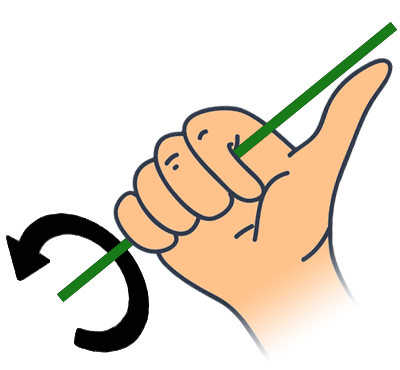
Since the boundary wire runs around your entire lawn, this magnetic field also runs around your lawn, because a current flows through the boundary wire. Since the Base Station has a connection for the input and output of the current, the current always flows in the same direction with every robotic mower installation – as long as you do not cross the ends of the boundary wire (which is why you are not allowed to do this).
If you now imagine that you would apply the right-hand rule to the boundary wire of your robotic mower, you will discover that at every point on the inward facing side of the cable, i.e. the lawn, the magnetic field lines virtually come out of the ground, so that “below” is the south pole and “above” is the north pole.
So it is clear: As long as the robotic mower measures that the south pole of the magnetic field is at the bottom and the north pole is at the top, it is on the right side of the cable. During operation, the mower always moves slightly beyond the cable, usually by about 12 inches. So its sensor will always protrude into the outside area where the field reverses at the moment it crosses the cable. The magnetic field here has a reversed polarity, so the robot knows: “Warning: I have reached the limit and must now turn back.”
But how can the mowing robot measure the field?
The principle of magnetic field generation can also be reversed. I’ve already explained to you that a conductor flows through the current, creating a magnetic field. In the same way, a magnetic field can create a current in a conductor, or in a coil. This principle is called electromagnetic induction.
By changing the magnetic flux density, an electric field is created and thus, in the end, electricity. A stronger field will naturally generate a stronger current.
Such a coil is installed in the robotic mower. While the mower drives through the magnetic field, a current is continuously generated which it can measure. If the polarity of the magnetic field is reversed, the current also reverses, which means that the mowing robot is on the other side of the cable.
If the current falls below a certain threshold value, this means that the mowing robot can no longer detect the current, usually indicating that something is wrong with the boundary wire. Many models then simply stop for safety reasons, because they can no longer be sure that they will stay within the limit.
Does the robotic mower use other techniques for navigation?
Basically you have to distinguish between robotic mowers with a boundary wire and robotic mowers without a boundary wire. These are considered the two “main categories” of robotic mowers. Mowing robots without a boundary wire use a grass sensor instead.
In addition to the boundary wire, some robotic mowers also have a guide wire that they can use for navigation. I have already written a detailed article about how this works. In summary, the guide wire works technically similar to the boundary wire, but it is laid right through the middle of your lawn. The robotic mower uses this cable to find its way back to the charging station and, in some models, to drive to specific points in your garden.
In addition, robotic mowers use impact sensors to detect when they hit an obstacle, such as a tree or even smaller obstacles. These are mounted at the front of the mower.
Some robotic mowers also use GPS for navigation. These models create a digital map of your garden over time. On this map, they remember when they last mowed in different places, and they can target specific points if they haven’t mowed there for a while. They also use the map to find their way around more quickly. Such models are advantageous for very complex gardens. GPS can also be used for other purposes, such as theft protection. Here you can read all about robotic mowers with GPS.
Related questions
How is the boundary wire installed? The boundary wire installation should be well planned in advance. The most important thing is to choose the correct distances. After the planning phase, it is advisable to lay the cable on the ground first to allow corrections to be made, before burying it.
Also interesting: How to correctly install your robotic mower
Are the magnetic fields of the boundary and guide wires harmful? The magnetic fields of the boundary wire and guide wire are very weak and pose no danger to humans or animals. Furthermore, the cables are only live when the lawn robot is mowing. At most, reception interference of radios in the medium and long wave range within the lawn area may occur.
Are there also robotic mowers without boundary wires? Not all robotic mowers use a boundary wire. Mowers without boundary wires use a grass sensor instead. This technology is not quite as reliable, but robotic mowers that use this technology have the advantage of a less-complicated installation, as well as the capability to be used flexibly on any number of surfaces.

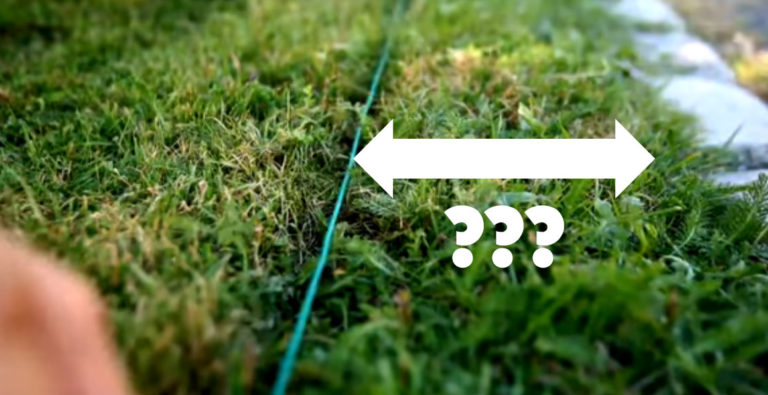
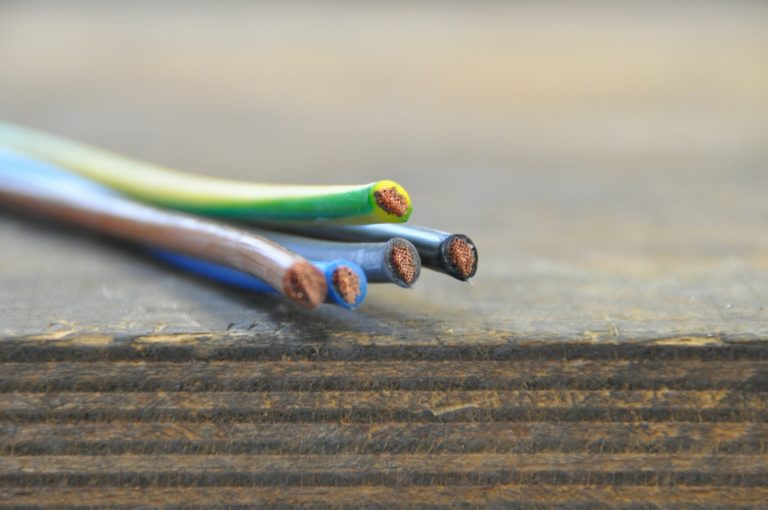

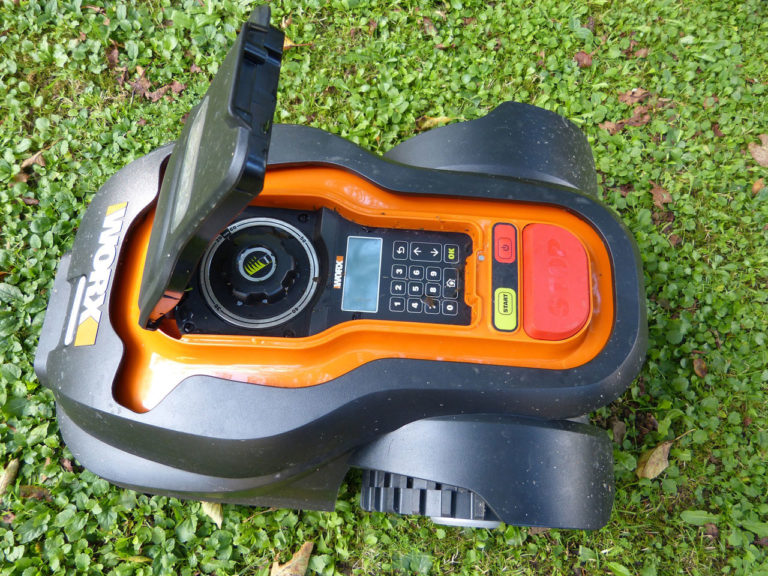
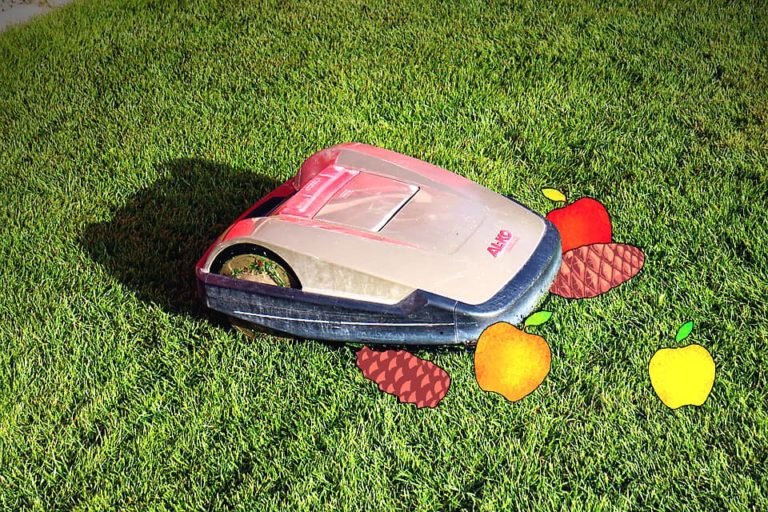
What kind of sensors are used to detect the boundary wire? can I use a hall effect sensor?
Thank you for this article. I was about to purchase battery back up in case of power blackout. Your article explaining how boundry wire works saved me $500.
Now I am not worrying to end up with my Works in pool.
Well written.
Hi Mathias. Thanks for an interesting article. Enjoyable. Cleared some stuff up for me Here’s a question you may be able to help with? Is it possible to create a mower boundary area by simply laying a boundary wire and connecting it to the positive and negative terminals of a 9v battery say? Thereby avoiding having to buy a second base station for an secondary area too far away to run the original boundary wire too? 😀
Are you sure that the mower doesn’t use a Hall-Sensor to detect the magnetic fields of the wire? A coil would be rather unreliable. 3 Hall sensors with different orientations would be much more accurate in determining the properties of the magnetic field at hand
Hi Matthias
Do you know the details of the actual signal waveforms sent around the boundary wires?
I am an electronics engineer, and had a 20 year old robomow which died.
ALL the latest robot mowers require the docking station on each lawn not connected, but my Robomow simply had a battery powered signal generator I plugged into whichever lawn I was mowing – so simple!
I’d like to make a similar box to drive my front lawn with a new robot mower – or does anyone make them?
Yard-Force is the one I’ve ordered.
Regards
Mike Davies
http://www.MikeDaviesElectronics.co.uk